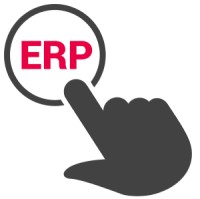ERP and e-Commerce
During 1990s’, the popular method of exchanging information between trading partners were Electronic Data Interchange (EDI) and all major ERP vendors added EDI facilities to their products. However, EDI did not achieve its desired outcome as each organization needs its customized EDI (to account for its unique data format), high set up cost (requiring privately run Value Added Network) and little cohesion or standardization. A majority of organizations did not use EDI functionality while implementing their ERP systems.
The advent of the internet and intranet technologies since mid 1990s’ saw the exponential growth of electronic commerce (e-commerce). E-commerce involved buying of goods through the internet (comprising of advertising need, issue invitation to tender, reverse auction, etc.), selling of goods through the internet (comprising electronic auction, publishing electronic catalogues) and handle related processes electronically such as receive invoice, making payment, monitoring performance.
Response of ERP vendors: ERP vendors were not agile to quickly respond to the changing need where customers and suppliers, wanted information, contained in the backend ERP system, for effective collaboration, better information flow and minimizing cost across the supply chain. Customers demanded supply status, billing information, warranty compliance over the web whereas suppliers wanted online information on inventory, supply schedule, and payment status.
ERP products have rigid architecture, and any modification/ development requires complex coding and developing a link between backend ERP with front end web based e-commerce, was a challenging task.
ERP vendors responded to this challenge by their effort to enable their product. They have developed some functionality in-house but also used/ acquired third party products such as storefront. They have developed new workflows encompassing vendors, customers, shippers, distributors, and bankers. They have made these workflows web enabled by adopting open standards such as Java and XML.

Another challenge faced by the ERP vendors for web enabling their product was security issues relating to e-commerce transactions, which are carried out by Virtual Private Network (VPN) over internet backbone. They have to adopt authentication tools such as electronic signatures and digital certificates, Secured Electronic Transactions (SET) and confidentiality through symmetric key encryption/ public key cryptography.
E-commerce transactions can be broadly classified under e-procurement and e-selling particularly under the context of business to business transactions. Some details under these classifications are given below:
E-Procurement - A typical e-procurement requirement of an organization is depicted below:
- Electronic tendering comprising of tender publication, submission, short listing, evaluation, and award. Facility for evaluation of IT/ Service contracts containing Complex evaluation matrix.
- Compliance of agreed quantity Vis-a-Vis called quantity, consolidation of called quantity for obtaining agreed quantity discounts.
- Facility for publication and updating of electronic catalogues by vendors.
- Analytics for spend analysis that is used for strategic decisions, supplier relation management and minimization of maverick buying.
- Facilities for reverse auctions through business to business marketplace.
For meeting the above requirement, ERP vendors carried out integration of web based front end with generation of demand (planning module), preparation of Purchase Order (procurement module), receiving of goods (warehouse module), payment (account payable module), dealt by back-end ERP system.
E-Sales - The biggest change that has been brought by e- commerce in respect of selling and marketing of goods is creating a new sales channel based on the web. This has impacted retail sectors in a big way through increased sales, expanded market reach including overseas market, improved customer loyalty, and reduction of transaction cost.
E-sales enhance value in respect of following business process:
- Reaching the customer quickly and a transparent way through the process of electronic auction.
- Processing customer orders promptly through storefront web applications.
- Checking credentials of the customer.
- Arrange drop shipment where the nearest distributor ships goods.
- Providing facility to the customer to check the status of order through the web.
For meeting the above requirements, integration of web system with back-end ERP system was done. Before order acceptance, ATP (Available to Promise) status of the item is verified from planning module. For quoting price, dispatching of good and receiving of payment, sales, warehousing, and accounts receivable modules of ERP system are interrelated.
| ❮❮ Previous | Next ❯❯ |
 Related Articles
Related Articles
- ERP - Introduction
- Historical Evaluation of ERP
- ERP Vendors
- ERP Architecture
- Business Process Re-engineering
Authorship/Referencing - About the Author(s)
The article is Written and Reviewed by Management Study Guide Content Team. MSG Content Team comprises experienced Faculty Member, Professionals and Subject Matter Experts. We are a ISO 2001:2015 Certified Education Provider. To Know more, click on About Us. The use of this material is free for learning and education purpose. Please reference authorship of content used, including link(s) to ManagementStudyGuide.com and the content page url.